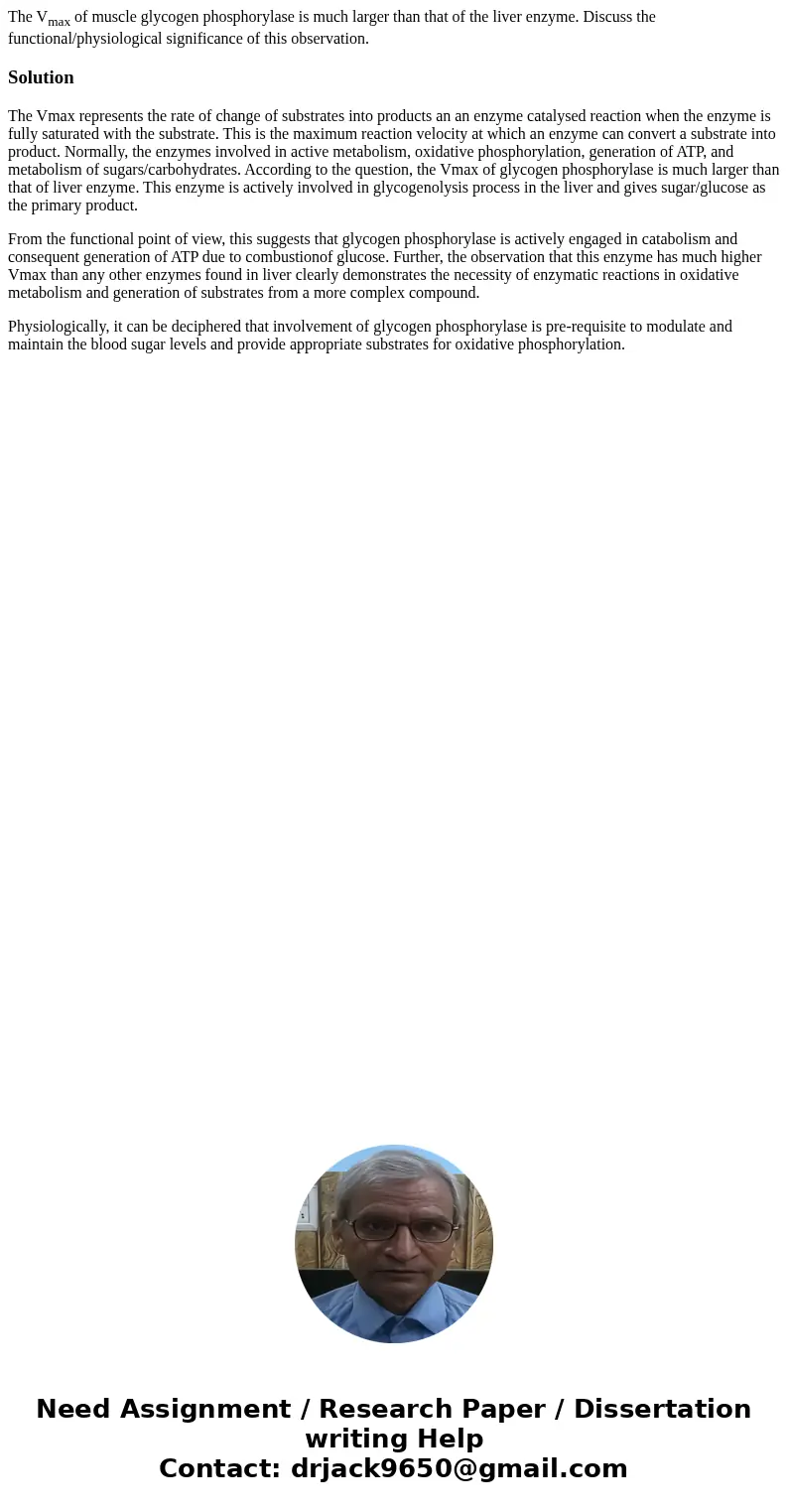The Vmax of muscle glycogen phosphorylase is much larger tha
The Vmax of muscle glycogen phosphorylase is much larger than that of the liver enzyme. Discuss the functional/physiological significance of this observation.
Solution
The Vmax represents the rate of change of substrates into products an an enzyme catalysed reaction when the enzyme is fully saturated with the substrate. This is the maximum reaction velocity at which an enzyme can convert a substrate into product. Normally, the enzymes involved in active metabolism, oxidative phosphorylation, generation of ATP, and metabolism of sugars/carbohydrates. According to the question, the Vmax of glycogen phosphorylase is much larger than that of liver enzyme. This enzyme is actively involved in glycogenolysis process in the liver and gives sugar/glucose as the primary product.
From the functional point of view, this suggests that glycogen phosphorylase is actively engaged in catabolism and consequent generation of ATP due to combustionof glucose. Further, the observation that this enzyme has much higher Vmax than any other enzymes found in liver clearly demonstrates the necessity of enzymatic reactions in oxidative metabolism and generation of substrates from a more complex compound.
Physiologically, it can be deciphered that involvement of glycogen phosphorylase is pre-requisite to modulate and maintain the blood sugar levels and provide appropriate substrates for oxidative phosphorylation.

 Homework Sourse
Homework Sourse